Galicia, Spain´s North Western province, is no doubt one of the most dramatic parts of Spain. This adjective does not only refer to the landscape but also to history and the many tales and legends about Saints, witches and the devil which abound in this part of the country.
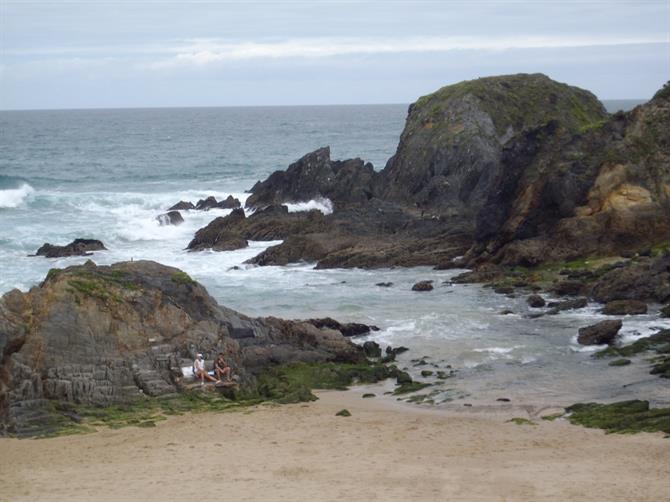
The Coast of Death
The Coast of Death comprises a long stretch of the Atlantic Ocean from Cap Finisterre to Camarinas and beyond. The name comes from the many shipwrecks, claimed by the fierce storms and dangerous rocks lining the length of the coast. As local lore has it, not all of the ship disasters were a work of nature. Human scavengers also had a hand in some by tying torches to the horns of cows imitating lighthouse fires and leading unsuspecting sailors to their death and their cargo into the hands of robbers.
The coast is best explored from either Santiago de Compostela to the East or La Coruna to the North. Covering the distance of 85 km from Santiago de Compostela to Finsterre by car means following winding country roads for most of the journey, first to Muros and then on to Finisterre. Another alternative is to travel by bus which leaves from the Central Bus station in Santiago three times a day.
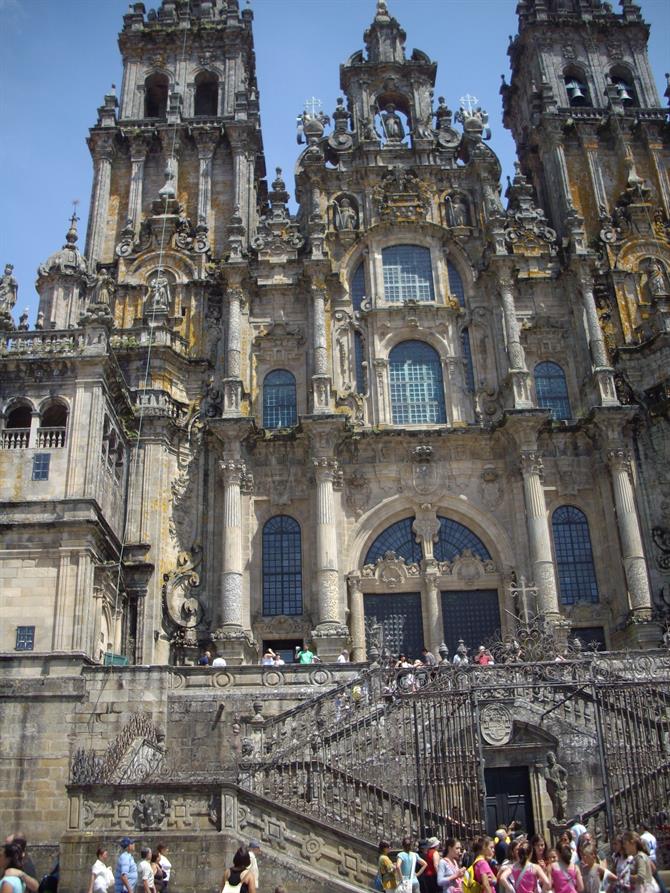
Cap Finisterre
For many pilgrims who walk the Camino de Santiago or St, James Way the final destination of their journey is not the cathedral in Santiago but the lighthouse which stands on top of Monte Facho marking the `End of the World,` as the Romans called it. Cap Finisterre, however, is not the westernmost point of Europe as the Romans perceived it, this is actually 16km further along at Cabo da Roca in Portugal.
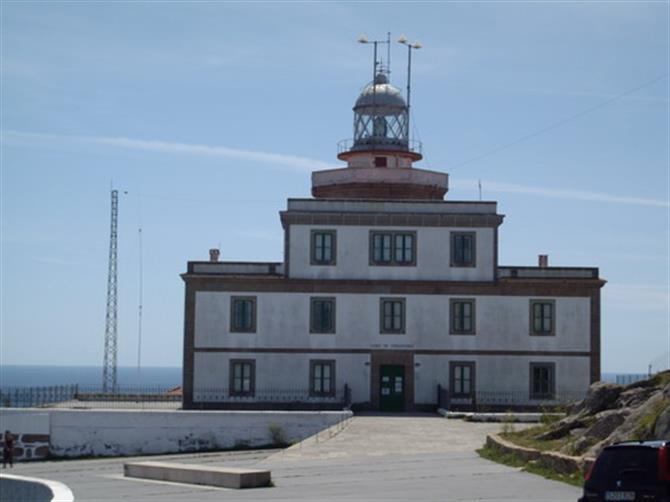
At the foot of the lighthouse perched on a rock stands a bronze boot where many pilgrims symbolically celebrate the end of their spiritual journey and the beginning of a new life by burning their travel clothes and shoes.
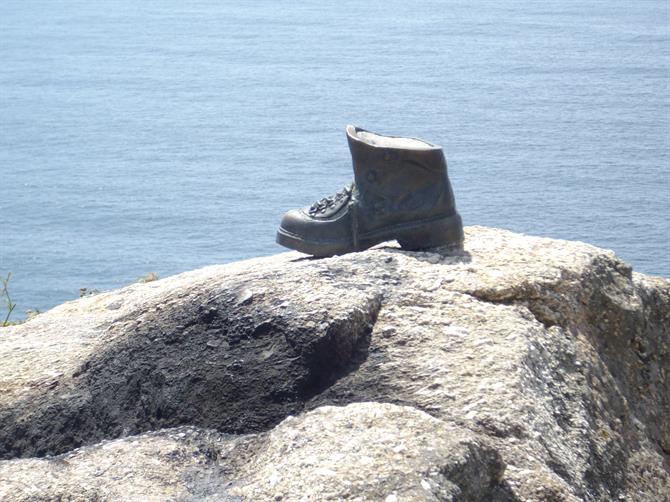
The lovely seaside and fishing town of Finisterre is nearby. Walking down from Cap Finisterre affords great views of the coast and some spectacular beaches, such as O Rostro, Arnela or Langosteira, many bordered by steep cliffs. The sand is fine and white and the water crystal clear but it requires a really (and quite rare) hot summer day to venture into the sea because the water is much colder than the Mediterranean.
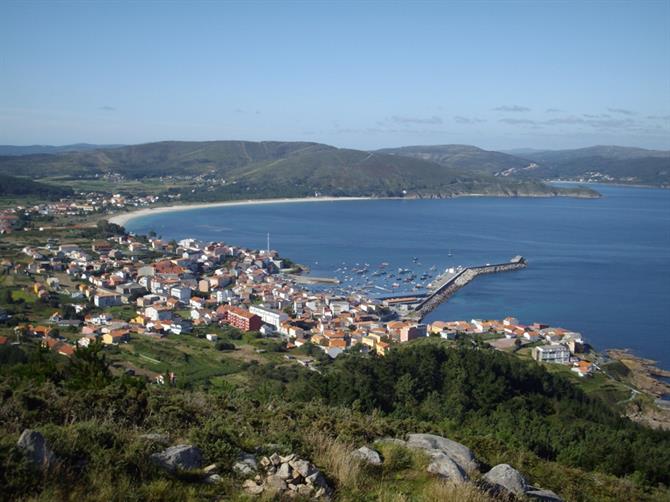
Apart from tourism the people of Finisterre make their living from fishing. An event not to be missed is a visit to La Lonja, the big open hall where the latest catches are auctioned off in a vociferous manner, incomprehensible to the layman.
In keeping with the drama theme is a fishing museum next to La Lonja where exhibits and videos document the hard and dangerous life of the fishermen and some of the more spectacular shipwrecks which occurred along the Coast of Death.
The Celtic origins of the region are evidenced by sacred or magic stone slabs and chairs. Local lore has it that if you lie down or sit on them, you will gain spiritual strength.
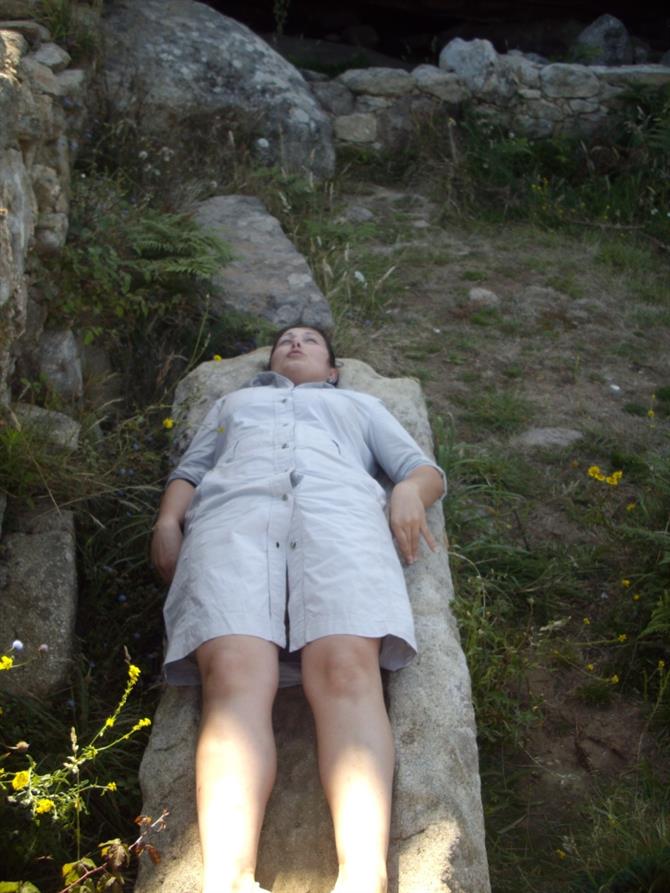
Cabo Vilan and Camarinas
The trip from Finisterre to Camarinas leads through the most typical example of rural Galicia. Stone bridges cross small rivers, pine forests are on both sides, sheep and cows graze in the meadows and people live in low slung stone houses, some of them very small. You can either drive or take a bus which runs once a day from Finisterre to Camarinas and back.
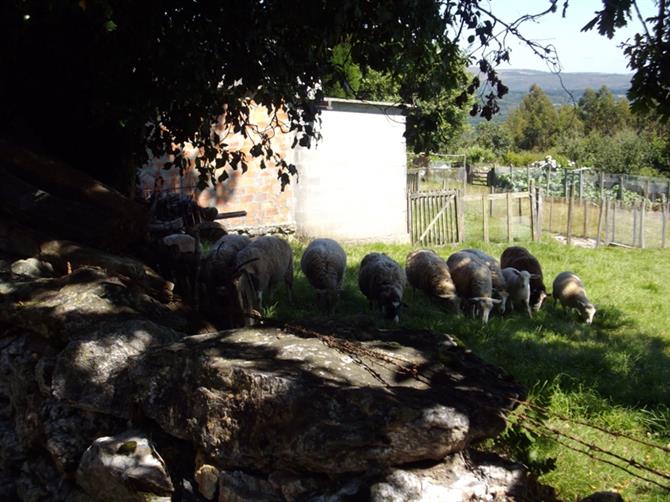
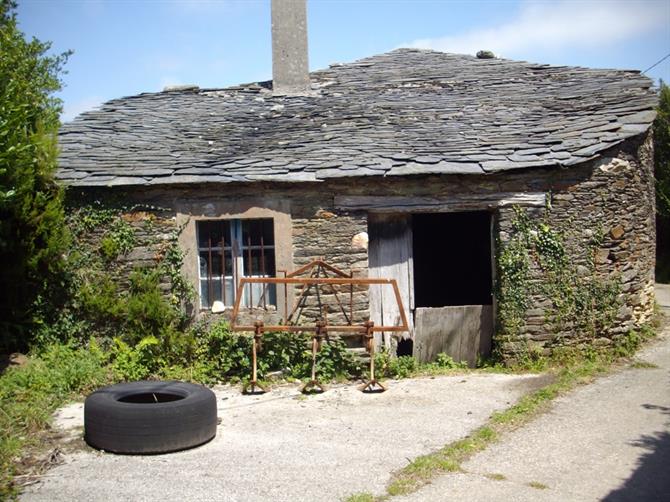
Everywhere you´ll find one of Galicia´s typical sights: horreos. At first glance they might be mistaken for chapels because they all have a cross on top, but they are actually storage units for grain and food. Made of stone with ventilation slits and erected on stone stilts, their purpose is to keep the grain dry and out of reach of mice, rats and other vermin.
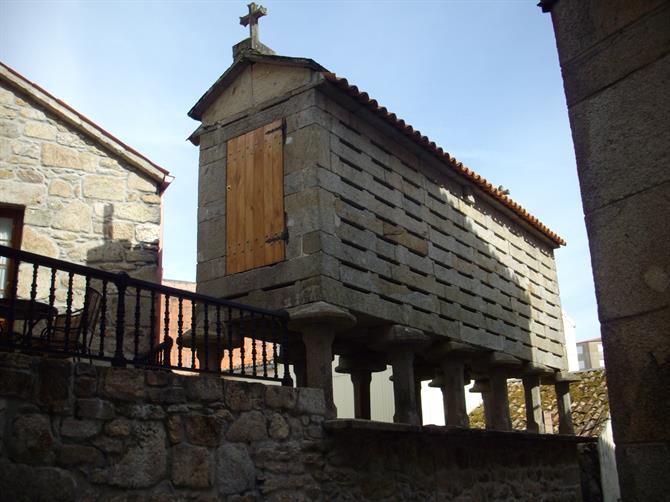
Back on the Atlantic coast, turning left off the AC 552 at Vimlanzo, Camarinas is a quiet and picturesque fishing town. It ´s built around a bay which forms a half circle inviting to a stroll along the boardwalk to enjoy the panorama. Camarinas is also the lace making centre of Spain.
Shop after shop line the main street on the other side of the boardwalk , selling the most beautiful curtains, scarves, pillow cases, table clothes and many other items made from or adorned with lace. Girls sit at the entrance to the shops with their hand held looms demonstrating their skills at incredible speed and hardly having to look at what their nimble fingers are doing.
Turn off the main street to the square where the Town Hall is located and visit the Lace Museum, exhibiting anything to do with lace and some fine examples of Spanish designer gowns decorated with lace from Camarinas. The museum is closed during the siesta, i.e. from 2pm to 5pm.
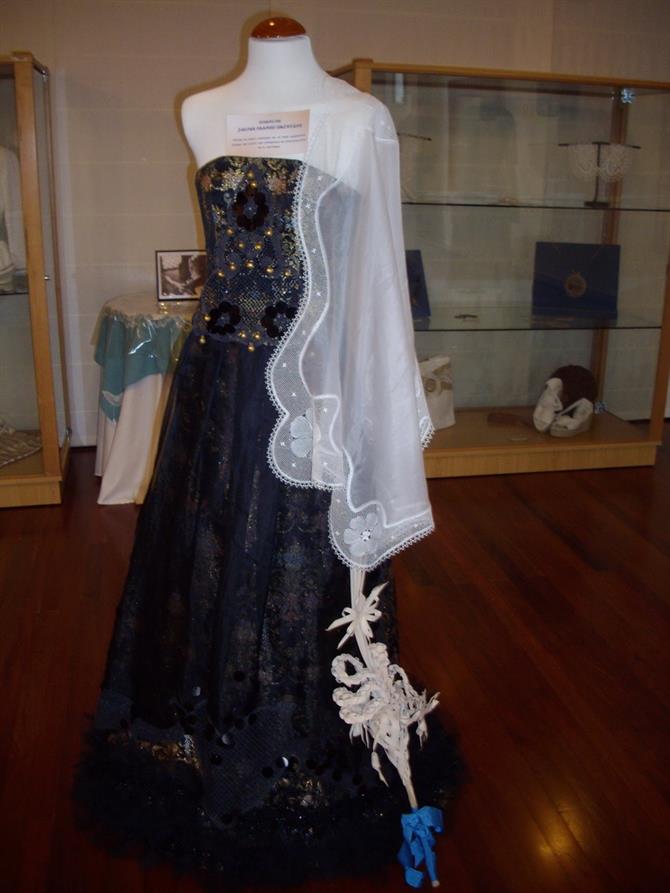
In front of the museum sits a massive statue of a lace making woman.
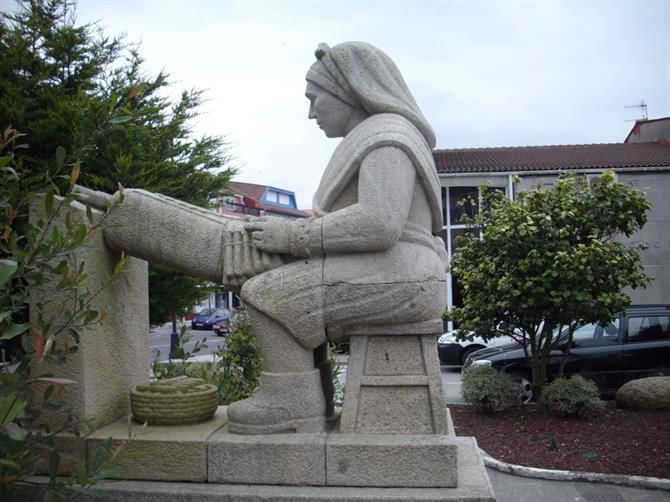
Nearby is the spectacular lighthouse of Cabo Vilan. The way there leads along Monte Blanco, the biggest sand dune in Europe. The entire area and coast line is a nature reserve because of its vegetation and marine bird life such as Kittiwake, Cormorants and Gannets.
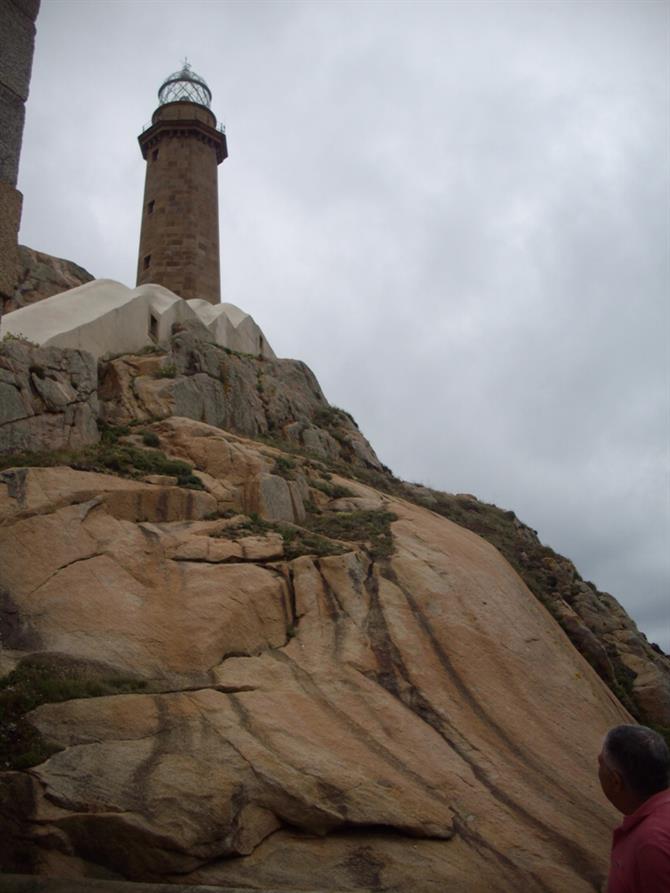
Cabo Vilan is the location of one of the most tragic ship wrecks in the history of the Coast of Death. In 1890, a British tall ship by the name of The Serpent, carrying 175 naval cadets crashed on the rocks near Cabo Vilan. All but three of the sailors drowned and their bodies were washed up on the beaches as were parts of the vessel. The survivors were cared for by the locals and the dead were buried in what´s called The English Cemetery, a memorial to the tragedy. A tribute to the dead is celebrated very year . The barometer of the ship is embedded in the wall of one of the houses in Camarinas. Since the 15th century there were over 800 ship wrecks on this extremely dangerous part of the coast.
After the crash of the Serpent which, as some say was caused by a malfunction of the lighthouse, a new lighthouse was built in 1896 which at the time was the tallest in Spain and the first to function with electric light. The site which features a tourist information office, a coffee and souvenir shop can be visited and an inner tunnel be climbed up to the lighthouse proper.
Siesta time is best spent by having lunch in one of the many restaurants along the bay. As Camarinas is a fishing town, fresh fish appears on every menu and you should not miss to sample Pulpo Galego. It's quid prepared in a very special way by being boiled in copper pots, then cut up with scissors, served with chunks of crusty bread and sprinkled with vinegar and chilli powder.Finish off with one of the strong cheeses, called tetas because they are in the shape of a female breast.
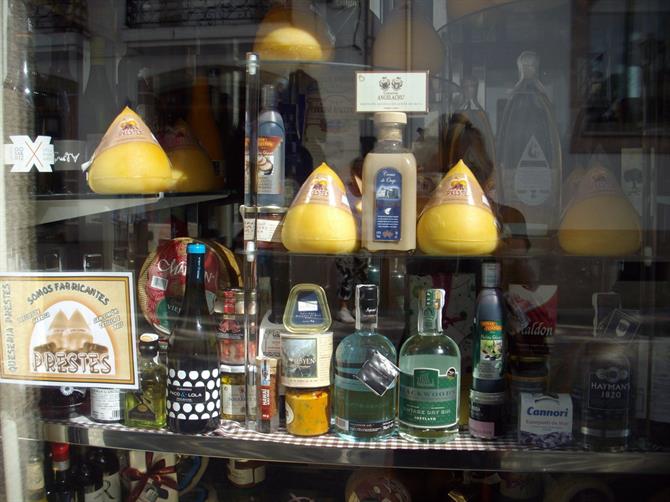
A visit to Galicia´s Coast of Death offers a unique insight into rural life of the region as well as unspoilt countryside , great wildlife and an understanding of the true nature of the sea.
